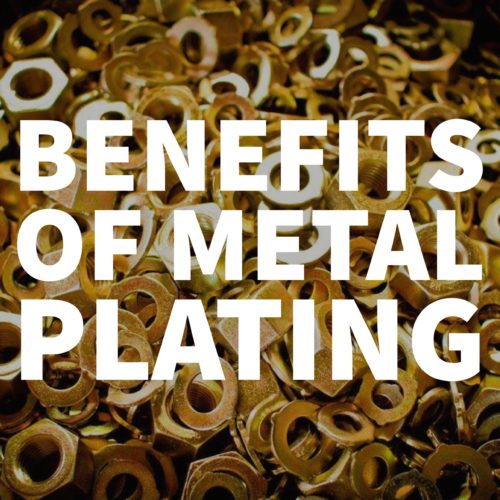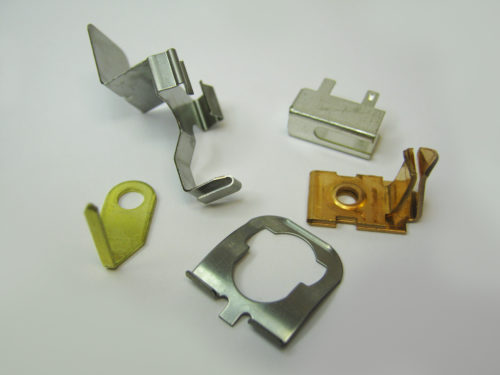The plating process involves adding layers of metal onto existing workpieces, and can allow for a wide range of performance benefits depending on the specific application. Various techniques and materials can be used to create unique end products, but the wide range of options can often be daunting. We’ve outlined some of the main benefits of each below.
The Benefits of Pre-Plating
 In pre-plating, raw material is plated as a continuous strip of metal before any kind of fabrication process is done to create individual parts. This means that when you cut pieces or drill holes into the strip of raw material, there will be no plating on the sides or die cut edges of the finished part that were not originally plated.
In pre-plating, raw material is plated as a continuous strip of metal before any kind of fabrication process is done to create individual parts. This means that when you cut pieces or drill holes into the strip of raw material, there will be no plating on the sides or die cut edges of the finished part that were not originally plated.
Pre-plating usually allows for significant cost savings in terms of both required labor and materials, because it is easier to coat one large piece of raw material than to individually plate each finished product. However, if the amount of scrap material cut out of the strip by the die is very large pre-plating could potentially be a higher cost than post-plating.
Pre-plating also reduces the risk of dimensional issues in finished products. Because the parts do not have to tumble in a barrel, they are less likely to be deformed. This is a distinct advantage over post-plating, which frequently results in dimensional problems because of the added manufacturing process.
The layer of metal added during the pre-plating process provides corrosion resistance, enhanced conductivity, and a polished, sleek aesthetic.
The Benefits of Post-Plating
Post-plating, on the other hand, is a function of the metal stamping process; because pre-plated workpieces are not fully plated after stamping, post-plating is often ideal for applications involving harsh environments or applications in which the part will be visible, making a seamless finish preferable.
Post-plating is usually more expensive than pre-plating, however, and involves further handling, putting the workpiece at risk for dimensional issues. However, when complete part coverage is required, post plating is the only option.
The Benefits of Selective Plating
 When 2 different types of plating are required in different areas of the same part, or when plating is only required on one portion of the part, selective reel to reel plating may be the best option. Sometimes parts need to be plated with precious metals, but only a small area of the part (i.e. terminal tip) requires plating. This is when it is beneficial to use selective pre-plating. Selective Pre-Plating allows us to save on raw material costs by only plating the portion of the part that really requires plating.
When 2 different types of plating are required in different areas of the same part, or when plating is only required on one portion of the part, selective reel to reel plating may be the best option. Sometimes parts need to be plated with precious metals, but only a small area of the part (i.e. terminal tip) requires plating. This is when it is beneficial to use selective pre-plating. Selective Pre-Plating allows us to save on raw material costs by only plating the portion of the part that really requires plating.
Selective reel to reel plating is very precise and is usually used when it would be cost prohibitive to cover the entire part with plating. It can also be used when a part requires nearly complete plating coverage to prevent corrosion, but barrel plating would cause dimensional deformations. In this case parts can be cut out into blanks, but kept on the strip. They can then be sent for plating on reels while still on the strip. After plating the reels can then be ran through the press one more time to break them free from the strip and complete the final forms to ensure dimensional control and print spec adherence. A small portion of the part called the “carrier tabs” which held the part to the strip will remain bare, but this process allows for nearly 100% plating coverage.
Learn More
As with any design and manufacturing scenario, it’s critical to determine which factors will have the most impact on the final product’s most important characteristics.
At Keats Manufacturing, our expert team can tailor solutions to your exact specifications and requirements. Check out our case studies to view our past finishing work, or contact us directly to discuss how we can help with your next project.



Comments are closed